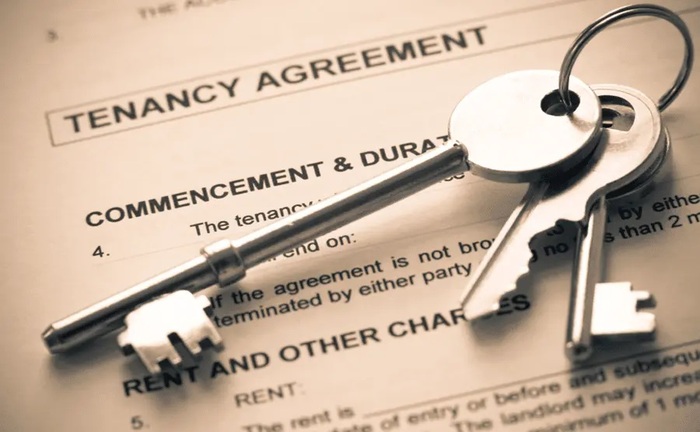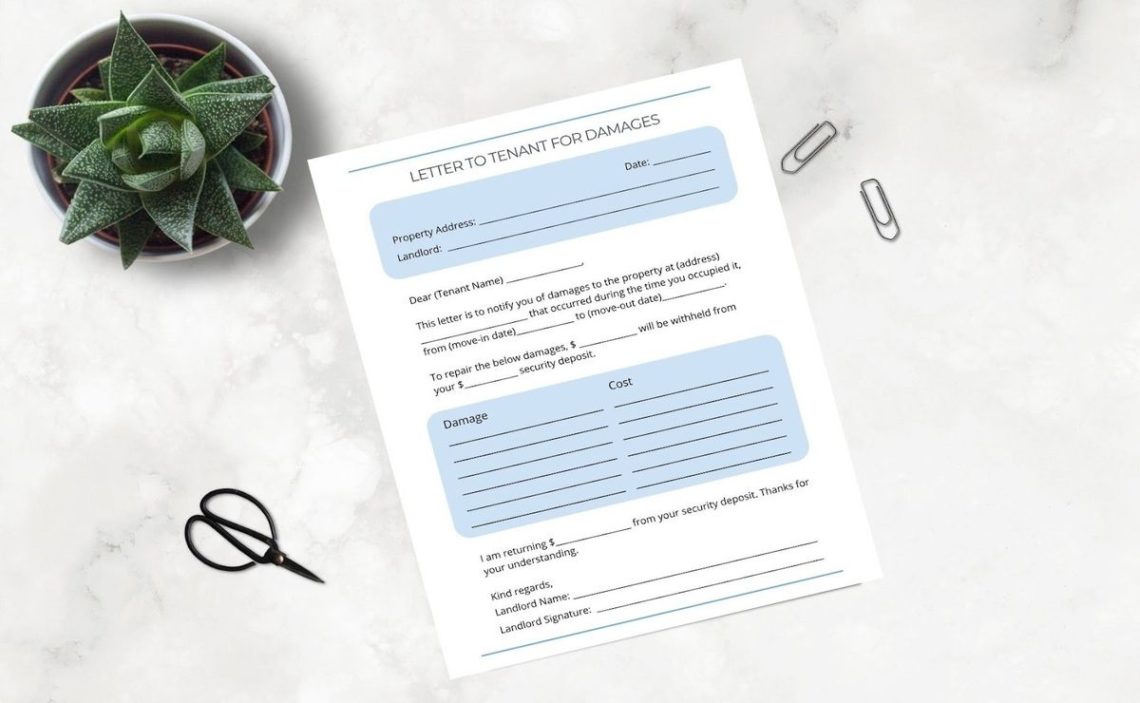Landlords of apartments, houses, buildings, or lodging places are responsible for keeping all premises neat, clean and tidy, with no cracks or leaks that could hinder the tenants’ stay.
Every neighbor is different, but they are similar in the reaction they may have when they are informed of an increase in their rent due to building repairs. This money comes out of the pocket of the tenants, who will receive a damage repair letter to keep the place in habitable condition.
Why is it necessary to send a Letter to the Tenant Regarding Repairs?
It is essential to notify the tenants of the building that repairs will be made to the premises so that everyone is aware that there may be a noise nuisance due to the repairs.
If this letter is not sent to all tenants in the building, the landlord will likely receive complaints about the noise caused by the workers or people repairing the damage to the building.
A letter is the best way to give advance notice of repairs to avoid upsetting the neighbors and avoiding future complaints, but there are several points to keep in mind when writing this note.
When should I send a letter to tenants for repairs?
The ideal time to send a letter to neighbors for building repairs is at least one week before the repairs are to be made. However, there are no official specifications on the timing of this notice.
The money to repair the damages caused in the building is taken out of the tenants’ pocket, so the landlord should send a letter notifying the tenant’s security deposit as soon as possible.
As agreed by each state’s laws, an amount must be returned within 14 to 60 days after the work is done. It should be noted that the tenant’s security letter must be sent before the period for returning the deposit of this money expires.

What are the repairs for which I need to send a letter?
Among the most common problems for which you have the right to send a letter to the tenant to pay for damages are the following:
- Walls, windows, or doors smashed by tenants.
- Broken pipes.
- Flooding from flushing sanitary products down the toilet (throwing paper, feminine pads, tampons, etc.). That should be stated in the lease, so the tenant should know the consequences of their actions.
- Appliances damaged by the tenant.
- Breakage of decorative accessories or any object belonging to the building.
- Damage caused by pets.
What happens if the damages exceed the security deposit?
Suppose you notice that more than the security deposit is needed to cover these expenses after calculating the money you need to repair the damages. In that case, you should notify the tenant through a demand letter for the money that remains to be paid.
The demand letter should detail each damage caused by the landlord and include receipts and invoices verifying the final amount for repairs. Once the letter is completed, it is sent by certified mail.
This letter should be taken as a last resort, as it is the step before a lawsuit, which will bring both the tenant and the landlord to face each other in court for damages (which is why you should always keep evidence, in case these altercations happen).
If you end up in court with the tenant, finding a real estate lawyer specializing in landlord-tenant disputes is best. If the conflict has not yet gone to court, a call from the lawyer will put more pressure on the landlord, who will be notified and may pay for repairs to avoid going to court.
What should I consider before sending a Letter to the Tenant Regarding Repairs?
Before sending a letter for damages, it is necessary to consider a series of data and legal information so that the letter is correct and supported by the law. When drafting the letter, ensure you have all the right information (read it as often as necessary, as it is a serious legal matter).
What you need to do before drafting the letter is to:
- Check the information in the lease.
According to the law, and depending on each state, the landlord has the right to keep a part of the tenant’s security deposit or even the whole. Look in the lease for the Security Deposit section. There should be a deadline for the tenant to pay for damages to the building. Also, the lease will specify the deadline for returning the money for this deposit and why the landlord will keep all the money and not replace it.
- Gather evidence of the specific damages.
The letter should list, in detail, each specific damage that has occurred on the premises. Some examples of how to describe particular injuries are:
- Dent in the wall 3 feet by 5 feet in the front door to the apartment.
- The hole in the bedroom is approximately 4 inches in circumference.
- Missing stove burners in the kitchen.
- The intercom was broken.
“A picture is worth a thousand words,” they say, so it’s an excellent idea to photographically document damaged spaces, even down to filming them for safekeeping as evidence, if necessary.
- Information on the amount of repair
After obtaining the repair estimate and reaching a monetary agreement, the landlord should provide all the information detailed in the letter to avoid misunderstandings. If possible, add invoices or proof of repair costs.
- Check that the tenant has renter’s insurance.
Some landlords require tenants to have renter’s insurance, like homeowner’s insurance. In this document, the names of the landlord and tenant are listed, covering different arrangements, such as the destruction of the property, theft of items belonging to the landlord, etc.
If your tenant has this insurance, you should notify them so that a claim can be filed for payment of the damages covered by the policy.
What information should a Letter to the tenant regarding repairs contain?
The most critical information a letter to tenants should contain is:
- Date of notice.
- Landlord’s name.
- Address of the premises.
- Security deposit withheld.
- A detailed description of the damage.
- Cost of each repair (attach proof of invoices if possible).
- Balance of security deposit.
For your guidance, you can download a sample Letter to the Tenant Regarding Damages in the button above.
References
- Agadoni, Laura. “Sample Letter to Return the Security Deposit | Apartments.Com.” CoStar Renterverse, 25 Sept. 2019, https://www.apartments.com/rental-manager/resources/article/sample-letter-to-return-the-security-deposit.
- Stewart, Marcia. “Writing a Letter of Complaint to a Landlord About Health or Safety Concerns | Nolo.” Nolo.Com, Nolo, 13 Feb. 2022, https://www.nolo.com/legal-encyclopedia/sample-letter-alerting-landlord-dangerous-conditions.html.
- Ward, Davina. “Sample Letter: Refunding and Not Refunding the Security Deposit.” Apartment List – More than 5 Million Apartments for Rent, Apartment List, 22 Sept. 2021, https://www.apartmentlist.com/rental-management/security-deposit-sample-letter.


